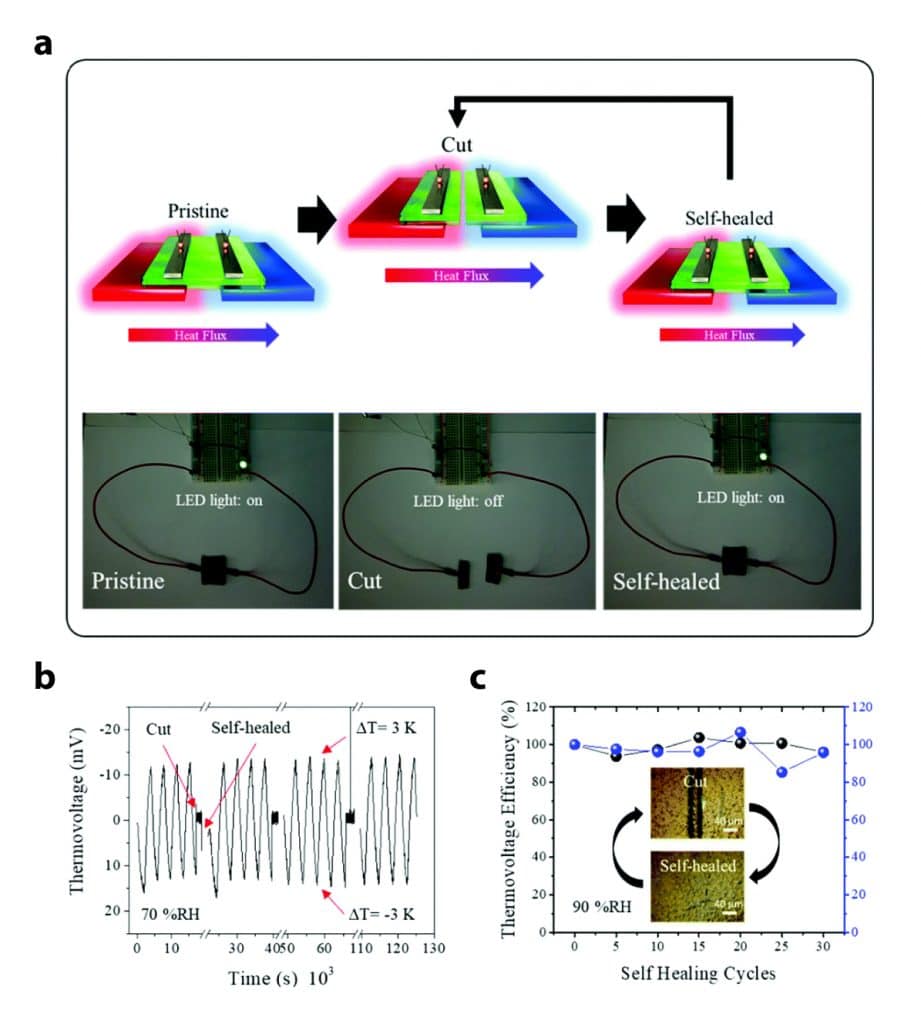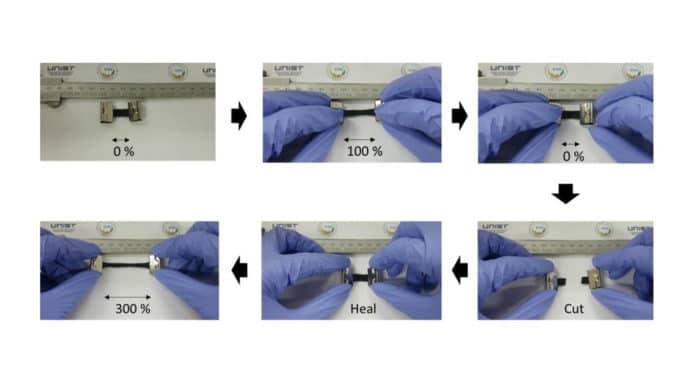Now, it is possible to harvest power from human body heat, thanks to a discovery by UNIST scientists that could lead to the development of smart clothes. Scientists have come up with a novel high-efficiency thermoelectric material that is intrinsically self-healable and highly stretchable.
This is the world’s first ionic thermoelectric (ITE) material that has good elasticity and self-healing abilities. By incorporating self-healing properties in TE materials that generate power directly from the heat, scientists were able to synthesize materials that possess intrinsic flexibility, stretchability, and self-healability all at once.
Thermoelectric generators (TEG) have gained large interest from scientists with the advent of wearable technology products. Despite having high efficiency, these TE materials are rigid and brittle inorganic materials, such as glasses or ceramics. Because these materials are clearly not so flexible and break easily, the inorganic-based TE materials are also vulnerable to deformation or mechanical strain caused by human motion. Although the organic-based TE materials have the benefits of having excellent flexibility, they have a low conversion efficiency rate.

In this new effort, scientists developed an intrinsically self-healable, stretchable, and flexible ITE material. It is made from conjugated polymer, an anionic polyelectrolyte, and a multivalent acid.
Scientists noted, “the proposed materials exhibit unprecedentedly high ionic figure-of-merit (ZTi), as well as remarkable stretchability and autonomous self-healability without any external stimuli.”
Professor Ju-Won Jeon in the Department of Chemistry from Kookmin University said, “We have developed a high-efficiency thermoelectric material that is intrinsically self-healable and highly stretchable through the blending of conjugated polymers and electrolyte polymers and the adding of cross-linking agent that can form hydrogen bonds and polar bonds with them.”
“The figure of merit (ZTi) of the stretchable and self-healable ternary TE hybrids is 1.04, which is the highest among other organic TE materials developed so far. Notably, this ternary TE hybrid can withstand strains up to ∼750%, and retain its original TE performance even after multiple stretching cycles (30 cycles at ∼50% strain).”
Journal Reference:
- Zico Alaia Akbar, Ju-Won Jeon, and Sung-Yeon Jang, “Intrinsically self-healable, stretchable thermoelectric materials with a large ionic Seebeck effect,” Energy and Environmental Science, (2020). DOI: 10.1039/C9EE03861B
